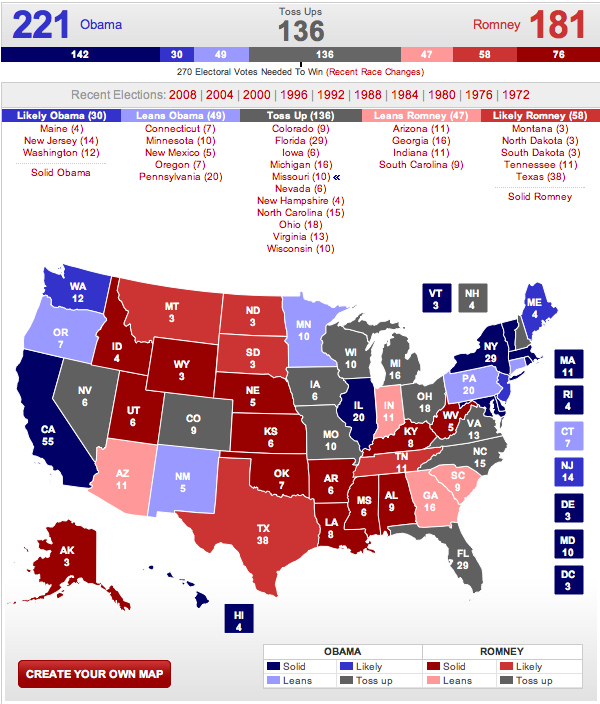
With the tragic shooting in Arizona splashed across the American media, there has been a flood of commentary attempting to make sense of the senseless act of violence. Amongst them are commentators who have pointed their antagonism towards the second amendment and the level of gun ownership within our country. Writers have pointed to the lower rates of gun-related violence in countries where gun ownership is more closely regulated than in America, and these facts and figures cannot be denied. This interpretation shows gun-ownership as a blemish on the face of an otherwise spotless society. But this comparison is not appropriate. Gun control should not be compared with gun-related violence; with fewer guns there will of course be a lower incidence of their use. The comparison we should look at is between gun control and violence, regardless of how it was perpetrated. In this light we see that contrary to popular belief, guns do more good than harm.
The National Rifle Association brought a suit against Palm Beach County,[i] Florida to force compliance with the state’s law that handguns be allowed in public parks. Gun control advocates satirically questioned the logic, asking of what use a handgun would be in a park. But the designation of an area as a park does nothing to deter criminals. So, you could use the handgun to repel the mugger attacking that old lady. Wherever there are people, there will be crime that must be prevented. To curtail this argument, the NRA also sued to allow for the carrying of firearms into courthouses, a ridiculous notion. So where should we be allowed to carry guns?
To answer in a nutshell: wherever there is not a heavy police presence. The framers of the American government understood this conundrum; they needed to assume the responsibility of keeping the American public safe without expanding the government into a police state. They did this with the addition of the Second Amendment, with the understanding that unless the state can assure the safety of its civilians, the public will need to be the guarantors of their own safety. One contemporary example is the Georgian town of Kennesaw[ii] (population 21,675 as of most recent local census in 2000), which in 1982, endorsed this idea by unanimously adopting the ordinance mandating every head of household own and maintain a firearm. Kennesaw has had only one case of murder in the twenty-eight years since it adopted the ordinance[iii].
On the other side of the public administration spectrum, the United Kingdom has perhaps the strictest restrictions on gun ownership shy of complete prohibition of private ownership, with the 1997 Firearms Amendment Act forbidding the ownership of pistols and handguns.[iv] At that time gun ownership in the United States was approximately 44 million. Today, less than 5 percent of households in the UK own firearms, where the United States has guns in 30 percent to 35 percent of homes[v]. The common method of analysis is to compare these percentages with the incident rate of gun-related violence or homicides with firearms involved, both of which display the United States at the summit of violence. This data comparison tells us nothing of real value. However, the comparison with incidents of violent crime reveals something different. Violent crime, according to these surveys, is forcible rape, murder, assault, and robbery. This analysis concludes the United Kingdom is the violent crime capital of Europe, and far outstrips the United States in occurrences of violent crime. The rates of violent crime in the UK come to 1,810 incidents per 100,000 people as reported by the British Crime Survey[vi] while the FBI’s report on violent crime gave the statistic of 429.4 incidents of violent crime per 100,000 people[vii]. Subsequently one are four times more likely to be victimized in the United Kingdom than the United States.
The statistical comparison between the US and UK may make a Kennesaw-style program like a viable option. However, the Kennesaw ordinance does not consider an element that is commonly omitted from the discussion: prevention of illicit arms-trafficking, sale and theft. With a firearm in every home, a weapon is only a daring theft away from empowering the criminal community. Moreover, the varied gun control legislation between such states as Massachusetts and Texas make circumventing Massachusetts’ laws a non-issue as one only needs to purchase a weapon outside the state. Subsequently, federal legislation is needed to enable a national gun registration program to allow weapons obtained through the appropriate channels anywhere in the United States to protect the person everywhere. This legislation needs to avoid the political questions of who is allowed to own a gun and what kind of weapons may be sold, and instead focus on firearm safety and weapons trafficking prevention.
Massachusetts gun-control law mandates that the applicant must pass a firearm safety exam before receiving their license. California enforces a waiting period to complete a background check. These are invaluable efforts to prevent accidental injury and tragic cases such as the Tucson shooting, yet, more can be done to improve safety.
A common fear for families is that their child might gain access to the household gun and cause grave injury to themselves or that the weapon will be stolen and used against them. Fortunately, the New Jersey Institute of Technology is currently working on a “Smart Gun”[viii] that uses biometric indicators to restrict use of the firearm to the license holder[ix]. In the final stages of development, since its inception in 2003, this new gun would not only keep operational firearms out of the hands of children but would also render the theft of these ‘personalized guns’ useless. In the mean time, before ‘personalized guns’ are commercially available the registration of bullet striations, a veritable fingerprint for the bullet and its gun, at the time of sale alongside standard identification procedures. These efforts must replace the A-class and B-class restrictions we currently have in Massachusetts.
Engage in this thought experiment: The one with the gun in Arizona was an irrational man assumed to be plagued with mental health issues, and a deadly weapon in such a person’s hands resulted in the death of nine innocent people and the injury of a dozen more. What if there was an additional gun in the hands of rational, law-abiding, man or woman? If the victims were not powerless in the face of a madman’s designs but empowered to defend their fellow citizens things might have been different. It is a commonly held belief that the only thing necessary for evil to triumph is for good men to do nothing. Good men acted that day, and likely save the lives of others, but those heroes were hamstrung from the beginning by being unarmed and unaware. So, why not try to bridge the difference in capability between the corrupt and the incorruptible?
[i]Frank Cerabino, “Guns in Parks: It’s Open Season Thanks to NRA,” Palm Beach Post, January 5th, 2011, http://www.palmbeachpost.com/news/guns-in-parks-its-open-season-thanks-to-1166129.html
[ii]“Demographics.” City of Kennesaw – Official Website. N.p., n.d. Web. 6 Feb. 2011. http://www.kennesaw-ga.gov/residents/installation.
[iii]Uniform Crime Report 2009, Federal Bureau of Investigation, United States, 2009, http://www2.fbi.gov/ucr/cius2009/data/table_08_ga.html.
Uniform Crime Report 2008, Federal Bureau of Investigation, United States, 2008, http://www2.fbi.gov/ucr/cius2008/data/table_08_ga.html .
Uniform Crime Report 2007, Federal Bureau of Investigation, United States, 2007, http://www2.fbi.gov/ucr/cius2007/data/table_08_ga.html .
“25 years murder-free in ‘Gun Town USA’: Crime rate plummeted after law required firearms for residents,” World Net Daily, April 19th, 2007, http://www.wnd.com/?pageId=41196#ixzz1CIv1xzNX.
[iv]“Total Handgun Ban Set to Become Law in Britain,” BBC, November 4, 1997, http://news.bbc.co.uk/2/hi/uk/politics/21724.stm.
[v]Global Firearm Deaths, Small Arms/Firearms Education and Research Network, Toronto, 2005
[vi]British Crime Survey, Research Development Statistics, Home Office, United Kingdom, 2010, http://rds.homeoffice.gov.uk/rds/pdfs10/hosb1210chap7.pdf.
[vii]Uniform Crime Report 2010, Federal Bureau of Investigation, United States, 2010 http://www2.fbi.gov/ucr/cius2009/data/table_01.html.
[viii] Weinstein, Sheryl. “Justice Department Awards NJIT $254,889 To Continue Developing Gun Technology.” New Jersey Institute of Technology, September 11, 2010. Accessed February 12, 2011. http://www.njit.edu/news/2008/2008-314.php.
[ix]Sheryl Weinstein, “Justice Department Awards NJIT $254,889 To Continue Developing Gun Technology,” New Jersey Institute of Technology, September 11th, 2008, http://www.njit.edu/news/2008/2008-314.php



